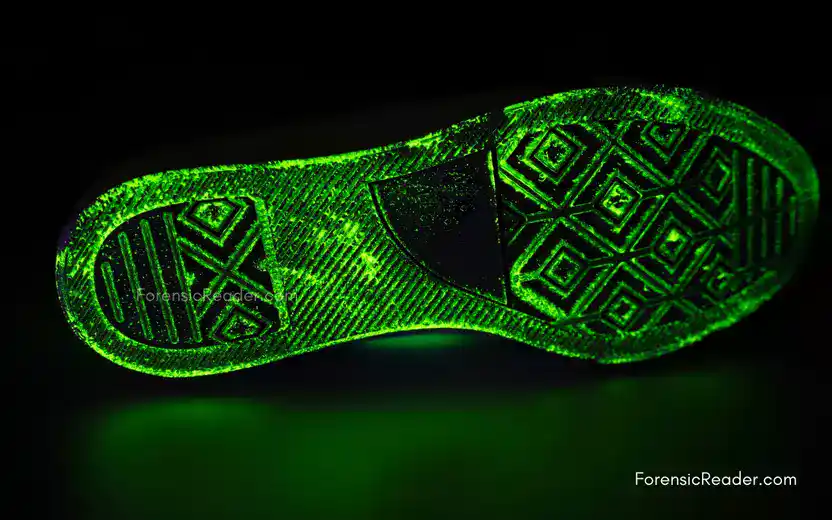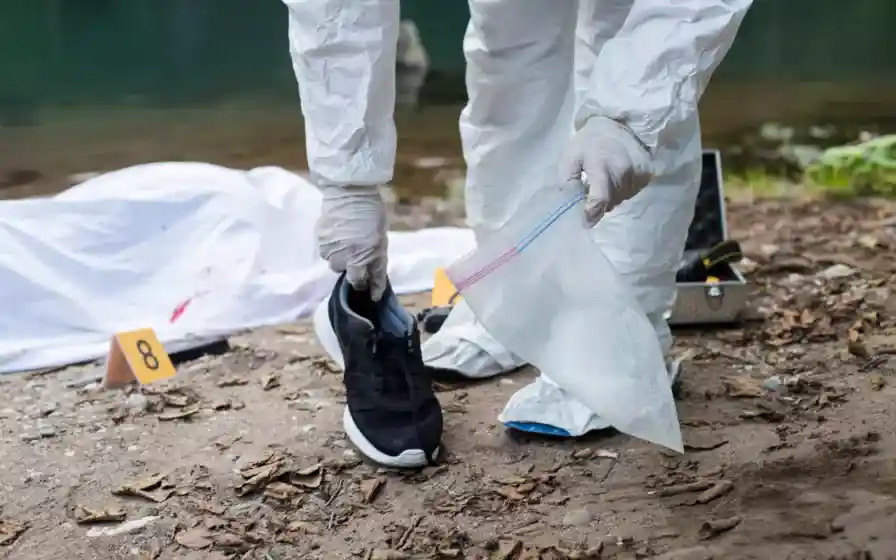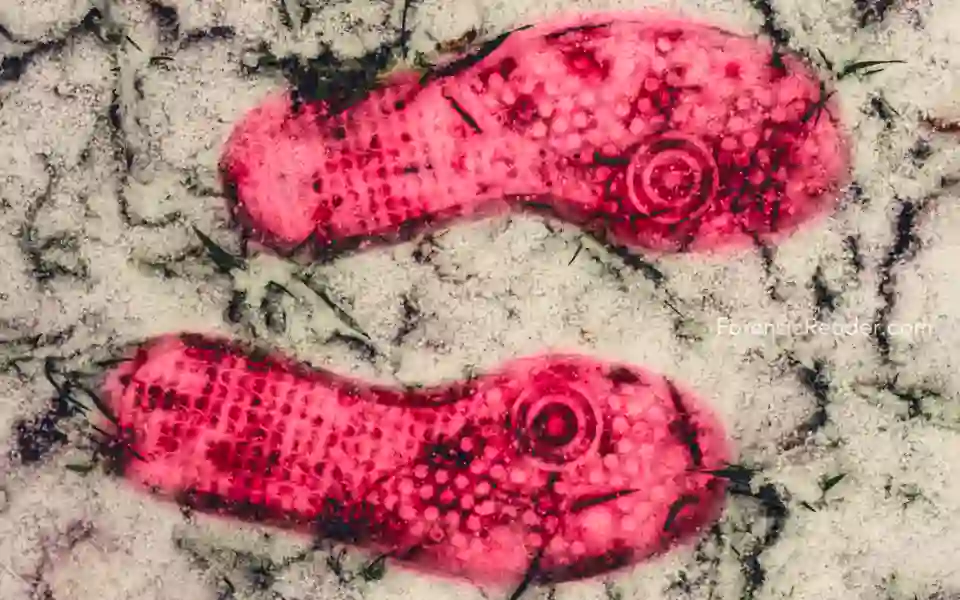Casting can be done on a 3d impression of evidence. With the introduction and development of cameras, many forensic examiners believed that the use of casting will be discontinued but that was proven to be untrue. Still, casting is an important tool in forensic science.
And, in this short article, I am going to state the importance of casting impressions in forensic crime investigations.
1. Provide a 3D informative View of Impression
Casting recovers a 3D model of the impression which can’t be achieved by photography. For shoe impression, a negative mark is produced when the shoe pressed the substrate such as soil, clay, etc, and leaves a print with rows and depth of sole impression.
In a 2d view, flat dimensions are registered whereas, in a 3D cast, it not only adds the 2D dimension but with the 3rd dimension of height or depth (negative marks).
With the help of a 3D cast, the depth of wear and tear of shoe impressions can reveal important details about the perpetrator.
For example: shoe casts of partially physically disabled persons by one leg. In this case, the cast shows more depth, wear, and tear of one sneaker over the other.
2. Maximum Detailing Than Any Other Forensic Mean
Maximum macro detailings can be captured by forensic casting materials. Following are some research states this fact:
- Cassidy, author of “Footwear Identification” states that the number of accidental characteristics recorded in a 3D impression will surprise you.
- DeHaan stated that there is more useful information that can be recovered from a cast than photography.
- FBI Law enforcement Bulletin of 1945, emphasizes the superiority of 3D casting over photography. Even in 2022, with the number of developments in cameras, still, the cast is given preference for the 3D cast.
- Osterburg, author of the book “An Introduction to Criminalistics” states that the best means to study impressions on mud, snow, or other surfaces is through the cast.
For example: here is the image of the shoe print that is cast with fluorescent casting material.

3. Life Size 3d Comparison and Physical Fit
The cast is a life-size 3D molding of impression. Unlike, image processing is needed in photographs to make them to a life-size, here no preprocessing is required. This enables one-to-one matching of the shoe cast with the suspected shoes.
It’s like a physical fit match. The right one fits.
However, a positive fit match with a sneaker only states its class characteristics such as which brand is from, what shoe size. To come with an individual shoe, other details such as wear and tear individual marks may be helpful.
Physical fit Casting Characteristics of Shoe impression:
- Class characteristics: brand, size of the sole,
- Individual characteristics: macro details, amount of wear and tear of soles
Physical Fit Casting Characteristics in Toolmarks:
- Striation markings: Scratching depth and angle
- Compression mark: repetition hammering, number of strikes
- Compression and striation marks: Combination of both
4. No Longer Works on Original Evidence

Reliability of evidence works on two things; maintaining chain of custody and integrity of evidence to physical damage.
And it is not viable to damage the impressions marks of a sneaker or tools marks on a gun’s handle, or on any substrate. The safety of the physical evidence is also important.
So, if the examiners make a cast of the impression, he/she no longer needs to work directly on the evidence for comparison. This prevents any addition or removal of marks because of usage and accidental damage.
5. Doesn’t Require Scaling and Lightning
For proper capturing detailing, a high-resolution camera is required along with proper scales (for image enlargements), and lighting (to reduce shadows from depth) is required. But with a cast, the examiner is not only going to get more information about the substrate but also a 3D impression to work on.
Footprint impression on surfaces such as white sand or snow needs extra effort to snap a photo with a contract. Thus, impression wax is used.
And in case, prints near the rocks or soil fill with granules, the details and depth are more favorable in the cast even with a high-resolution camera with better lighting. It’s always better.
Note: This doesn’t mean a forensic examiner doesn’t have to take photographs. Photographs should always be taken before casting. Because, if casting goes wrong, it still has a 2d impression that possesses wear and tears marks. And also supportive evidence that the cast is made on the same marks that were found at the crime scene.
6. Greater Details on Different Substrate

There are several myths about casting. One of them is: casting only works on the firm substrates and can’t capture details on the sand surface.
It was proven by many authors, how casting over soft materials such as dust, fresh snow and mud can be possible and they even reproduce a better quality of details than photography. Know More: How to cast on shoe impression on snow?
Casting also holds the minor details on a substrate where impressions are partially registered because of the gravel, stones, and other debris. Here, casting is far-far better than photographing because of shadows and different sizes of granules. Know More: How to Photograph Shoe and Tire mark impression on snow?
7. Multiple Analysis at Time
A single cast can produce multiple mold samples. This gives easy access to different investigators in finding the perpetrator’s impression.
Let’s say, you made a cast of shoe marks from a crime scene, and at the laboratory, you made 3 to 4 molds from that. And you have 100 shoe prints, in that case, each mold to one investigator decreases the workload and increases searching potential.
Other Application:
- Used to demonstrate the impression marks at court and in front of a jury.
- For educational purposes, demonstrate the cast-making to class.
- Creating a negative cast from a mold, etc.
General FAQ
Do I need to cast if I photograph an impression?
Yes, every 3d impression evidence at a crime scene should be cast including shoe marks, tire marks, striation marks, compression marks that could be related to the forensic investigation. However, it doesn’t mean you have come up with 100 shoe marks cast at a crime scene. This also governs by manpower and it totally depends on versatility differences between them.
Photography Vs Casting: Which Should be Done and When?
Photography should always be done, whether doing casting or not. While casting is only performed in case of possible impression marks. And the real purpose of photographs with casting is to show the location of the evidence with respect to the crime scene. This helps in understanding how impression evidence was made at crime scene reconstruction.
How to Document and Maintain Chain of Custody of Cast impression?
First, the investigatory should gain the essential background information about the type of crime and question the eyewitness. Secondly, finding, enhancing, and recovering evidence at a crime scene including casting. The third step is to submit it to the laboratory for four-stage examination i.e. ACE-V (Analysis, comparison, Evaluation, and Verification) by SWGFAST.
Read More:
- Forensic Casting Materials: How to Choose One For Different Surfaces?
- How To Cast Footprints on Snow? Forensic Impression Materials
- Mortar and Concrete Analysis: Forensic Aspects & Chemical Tests
- Adulteration of Cement: Test, Chemical & Instrumental Analysis

FR Author Group at ForensicReader is a team of Forensic experts and scholars having B.Sc, M.Sc, or Doctorate( Ph.D.) degrees in Forensic Science. We published on topics on fingerprints, questioned documents, forensic medicine, toxicology, physical evidence, and related case studies. Know More.
